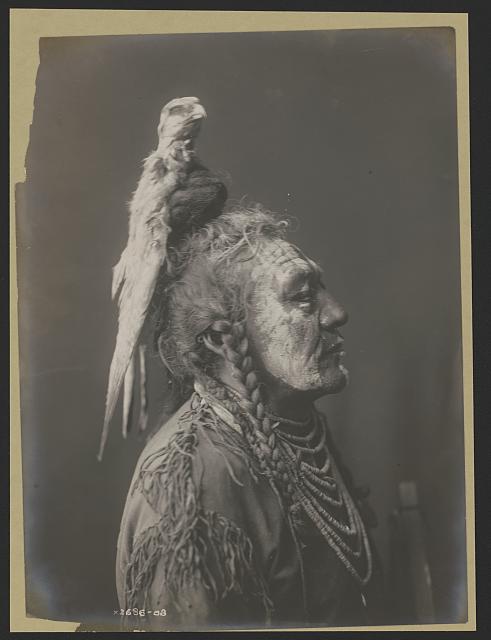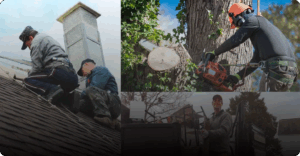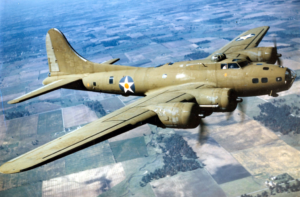
- Photographer Edward Curtis
Edward Curtis, a noted photographer of the American Old West, was also an ethnographer who captured the daily life of the Native Americans. He had begun his photography career at 17 in 1885. A few years later, he met and photographed Native American Princess Angeline, daughter of Chief Stealth in Seattle, Washington. His work won him a spot in a National Photographic Society exhibit in 1898, and he traveled to Mt. Rainer to photograph its majestic splendor. While there, he met a group of scientists, among them George Bird Grinnell, a Native American expert. Grinnell invited Curtis to photograph the Harriman Alaska Expedition in 1889. His success with this exhibition led to Grinnell inviting Curtis to join a new expedition in 1900, this one to Montana to photograph members of the Blackfoot Confederacy. This would be a pivotal moment in Curtis’ career as it set him on a path to photograph and preserve the lives of Native Americans, whose way of life were threatened in the wake of colonization.

A few years after his foray into Montana, Curtis was awarded $75,000 from J.P. Morgan for an extensive project called The North American Indian. Curtis would create 20 volumes worth of 1,500 photographs chronicling the life of the tribes across the country. It was an amazing project, however, it would also be tedious, as Morgan’s money was only for fieldwork on the series. Curtis wasn’t receiving any money to write, edit, or produce the books, nor was he being given a salary. Nonetheless, he did the project, and it was the greatest work of his career. In return for financing the volumes, Morgan was to receive 25 completed copies and 500 original prints. Curtis also had assistance from Theodore Roosevelt, and the then-kings of England and Belgium.

Curtis took 30 years to complete the exhaustive project, and he preserved much of the heritage of the tribes, not just in photographic form, but also audio. Over 10,000 wax cylinder recordings were made by Curtis, and these captured the language and songs of the tribes. He also wrote many accounts of the tribes down, and hired a noted editor, Frederick Webb Hodge, to edit the compilations. In the end, over 40,000 photographs of 100 Native American tribes were taken. The entire set of The North American Indian volumes has been preserved online by Northwestern University. The work features startling images that we would’ve never seen if it weren’t for Curtis’ efforts. Here are 33 amazing images from the collection as well as the stories behind each.
A Klamath woman, 1923

The Klamath peoples, including the Modocs and the Yahooskin, lived in northern California and Oregon. The tribes believed that Creator gave them everything they needed to survive through the abundance of the Cascadians. The tribes did not see a white person until 1826, In just 28 years after the encounter, the tribes ceded 23 million acres to the U.S. government in exchange for a reservation. Congress passed a law in 1954 revoking federal recognition of the Klamath. The tribes then lost their reservation and their human services. Their rights were restored again in 1986.
A Kutenai woman with her canoe, 1910

The Kutenai, also called Kootenay or Kootenai, were a once prevalent tribe in British Columbia, northern Idaho and northwestern Montana. Like other tribes in the Pacific Northwest, they travelled mostly by canoe. The Kutenai language is an isolate, which means it is totally unrelated to any other language family.
The Kutenai never signed a treaty with the U.S. government. In 1974, knowing that the tribe needed better education, transporations and services, Chief Amy Trice declared war on the United States. The tribe never committed violence and through peaceful resistance were awarded the land which is now the Kootenai Reservation in Idaho. The Kutenai are one of five federally-recognized tribes in Idaho.
Cheyenne Men Preparing for the Sun Dance, 1910

These Cheyenne men were preparing for the Sun Dance. They are wearing full body paint, as this is a sacred ceremony. The Sun Dance is a religious ceremony that Plains Indians (Sioux, Cree and Cheyenne) once practiced around the Summer Solstice. People who attend the ceremony dance, sing and even practice self-mutilation. The U.S. and Canadian governments wanted to suppress Indian culture, so they outlawed this practice. In 1978, the U.S. Congress finally passed the American Indian Religious Freedom Act, which restored the legality of the religious practices of the Plains Indians.
A young Jicarilla girl, 1904

The Jicarilla are officially members of the Apache Nation. For thousands of years, they lived in northern New Mexico and southern Colorado, nomadically roaming the Sangre de Cristo Mountains and plains. For many years they lived peacefully and moved seasonally in order to hunt, gather and fish. In the mid-19th century, the Jicarilla faced many challenges due to the presence of white settlers. They fought European settlement on their lands. They fought against the U.S. Army at many battles including the Battle of the Cieneguilla. In 1887, President Grover Cleveland signed an executive order creating the Jicarilla Reservation in New Mexico.
A Crow man named Lies Sideway, 1908

In the 1860s, the U.S. government started forcing Native Americans onto reservations. It also started compelling young people to go to schools that were intended to assimilate the children, and teach them not to honor the old ways.
In 1878, Richard Henry Pratt, a lieutenant in the Army, had created boarding schools for Native American children. These boarding schools prohibited the children from speaking native languages. The school forced them to wear Western clothing and cut their hair. Between 1880 and 1902, there were 25 Pratt boarding schools, with over 10,000 students attending. The children who were sent there largely went against their will. They still kept their cultural traditions and often vowed to practice them in secret.
Cheyenne Woman, 1910

The first Cheyenne reservation in Colorado was established in 1851 as a result of the Fort Laramie Treaty. Many years later, the U.S. government decided to revoke the treaty due to the discovery of Gold in Colorado. In 1877, the Cheyenne were ejected from their land and onto an Oklahoma reservation. Not all Cheyenne went peacefully. Some fled to Mexico, where a reservation was established in 1884. This Cheyenne woman bears the face of someone whose spirit has never been broken.
A Skokomish woman named Hleastunuh, 1913

This Skokomish woman lived among her people in the Hood Canal area of Washington. The Pacific Northwest Indian tribes practiced a gift-giving feasted called the Potlatch,which functioned as the main economic system among the tribes of the Northwest. These feasts were held for special occasions, such as a birth, wedding,adoption or death. Canada aggressively outlawed the Potlatch for decades as part of its Indian Act. The ban on the Potlatch was not lifted until 1951.
A Zuni man named Si Wa Wata Wa, 1903

The Zuni people are Pueblo Indians who live in New Mexico and Arizona, near the Colorado River. They have lived in Adobe settlements for over 1,000 years. The Zuni reservation was first recognized by the U.S. government in 1877. The Zuni have a remarkably well preserved culture. They speak a language that has no relationship to any other Native American language. Linguists believe the Zuni have maintained the integrity of the Zuni language for a minimum of 7,000, and possibly much longer. The Zuni have long maintained a culture based on shepherding livestock and irrigating agriculture in the desert.
An Acoma man, 1904

A young Acoma man posed proudly for this photograph in 1904. The Acoma are a Pueblo tribe in New Mexico, where they have lived for over 800 years. The original homelands of the Acoma numbered more than 5 million acres. However, due to interference by the government, the Acoma now only retain about 10 percent of this land, which is not called the Acoma Indian Reservation. Traditional religious beliefs of the Acoma include harmony between man and nature, and worship of the sun.
Three Crow men participating in “The Oath” 1908

Curtis called this ceremony “the Oath.” These men are from the Crow Nation. The Crow originally lived in the Eastern Ohio Woodlands area before being pushed West. They lived in the Yellowstone River Valley, extending through Montana, North Dakota and Wyoming. It may be that these men are taking an oath to protect their lands.
A Navajo Man, 1904

The second largest federally recognized indigenous tribe in America is the Navajo Nation. The Navajo are based in New Mexico, largely because of the Long Walk, an event where the U.S. government forced 9,000 Navajo people to walk to Fort Sumter in New Mexico. This happened in 1864, and resulted in the Navajo living in internment camps. In 1868, the Navajo signed a treaty with the government, creating a reservation on the Navajo ancestral lands. The Navajo became one of the few tribes who were permitted to return to their homelands. They received 3.5 million acres near their four most sacred mountains. The Long Walk permanently changed the psyche of the Navajo Nation.
A Navajo Man, 1904

Curtis photographed another Navajo man, who has covered most of his face with a warm blanket. Despite the hardship of the Long Walk and the return, the Navajo successfully expanded their holdings to 16 million acres. Their population in Arizona and New Mexico numbers 250,000.
A Navajo chief, 1904

This Navajo chief was photographed in 1904. The Navajo language was complex and unintelligible to people who had not lived among the Navajo. As a result, the Marines recruited Navajo during World War II in order to create an unbreakable code for communicating important messages. The syntax, tonal qualities and dialects made it impossible to decipher. Less than 30 non-Navajo people could understand this oral language. As a result, Navajo code talkers created the only oral code that has never been broken. Experts say the U.S. would never have taken Iwo Jima without the Navajo code talkers.
An Arikara girl, 1908

The Arikara were semi-nomadic tribes that may be related to the Pawnee. Their ancestral home was in South Dakota. The name Arikara is thought to mean “horns,” which refers to the ancient custom of wearing upright bones in the hair. Some believe the name means “elk people.” Europeans who encountered the Arikara in the mid 19th century observed that they cultivated the finest crops in North America. In 1870, the Arikara were joined with the Hidatsa and Mandan after all three tribes had staggering losses due to Smallpox. A reservation was created at Fort Berthold Reservation in North Dakota.
A Nez Percé man named Three Eagles, 1910.

This warrior is named Three Eagles. He was a fighter alongside Nez Perce hero Chief Joseph. The Nez Perce, which called itself the Nimiipuu, were renamed Nez Perc by French-Canadian fur traders who had observed the people with pierced noses. In 1877, the tribe split, with those willing to give up their lands relocated to a reservation. The resisters, including Chief Joseph, attempted to flee to Canada. The U.S. army eventually caught them and forced them to surrender in October of 1877. The Nez Perce reservation is located in Idaho. The Nez Perce had a traditionally horse-centric culture that the U.S. government suppressed. Over the last few decades, they have embarked on an ambitious horse breeding program to reinvigorate their horse culture.
The Apsaroke man Lone Tree in 1908

In this head and shoulders photo of Lone Tree, Edward Curtis captured a rare look at an Apsaroke warrior. The Apsaroke, who also are referred to as Crow, historically lived in the Yellowstone River Valley. They now reside on a reservation near Billings, Montana. The Crow made traditional shelters that were large tepees made with buffalo skins and wooden poles. They slept on mattresses inside the tepee, near the borders, and kept a fireplace in the center, with the smoke escaping through a hole in the top of the shelter. The tribe is matrilineal, matrilocal and matriarchal, with many women serving as chief.
A Wishham woman in 1910

The Wishram people are native to the Columbia River valley in Oregon. They were forced to forfeit their lands in 1855, when the government made them sign treaties. The Wishram are closely related to the Wasco tribe, and both are Chinook. The Wasco and Wishram fished opposites sides of the river. Today, these small tribes have been absorbed into the Yakima Indian Nation in Washington state.
The Kittitias Warrior Luqaiot, son of Owhi, in 1910

When Lewis and Clark explored the Northwest, they observed around 3,000 to 4,000 Kittitas and Yakama Indians in the Kittitias Valley in Washington State. However, by the 1860s, these people were being encouraged to leave the area so that cattle ranchers could move in. many Kittitias moved into the Yakama Indian Reservation. Today, the tribe is nearly extinct. Curtis interviewed the then-77-year old Luqaiot and published a 17-page recollection about the Battle of Hangman Creek, a deadly battle that killed Luqaiot’s brother Qualchan when he was just 22 years old. The brothers were the son of Chief Owhi, who lead the Salishan band that lived in the Kittitas Valley. The Battle left Luqaiot with an egg-sized dent in his forehand, which is camouflaged in this photograph by the man’s hair.
A Cayuse man, 1910.

The Cayuse tribe lived in Oregon and Southeastern Washington. They ceded most of their land to the U.S. government in a one-sided treaty in 185. They merged with the Walla Walla and Umatilla tribes on a reservation in Oregon. Like their neighbors the Nez Perce, the Cayuse people were excellent horsemen, developing a special breed called the Cayuse pony.
A Mandan man holding a buffalo skull in 1908

The Mandan people established an agrarian and settled culture along the Upper Missouri River, living in the area that is now central North Dakota. Their villages were constructed in a circular pattern and each household built around large home, with the more prestigious families closer to the middle. At the center of each village was a sacred cedar post, which was used for spiritual ceremonies and celebrations. The Mandan lived collectively, with each family working to the benefit of the entire village and tribe. The Mandan farmed and tended to bison.
A Sarsi man named Aki-tanni, meaning Two Guns, in 1927

The Sarsi people lived on the Great Plains in the Northern United States, but their history began in the area near Alberta, Calgary. When they migrated South, they came into contact with the Blackfoot peoples, who gave them the name Sarsi. However, the two tribes were at war, so the tribe has reclaimed their original name, the Tsuu T’ina. Today the Tsuu T’ina now live on their reservation near Alberta.
An unidentified Crow man, 1908.

The Crow Nation encompassed much of what is now Montana and Wyoming. Crow men and women wore their hair long,. Chiefs would sometimes grow their hair so long it almost reached the ground. Crow men liked to style the front of their hair into high pompadours like the man in this Curtis photograph. The Crow were well known as horsemen who followed the buffalo. They were expert scouts and bitter enemies of the Lakota.
A Clayoquot woman paddling her canoe, 1910.

The Native American tribes living near the Clayoquot Sound are called the Ahousaht and the Hesquiaht. The live on the west coast of Vancouver Island today. When European settlers began to infiltrate the area in 1856, disease like measles and smallpox were introduced, ravaging the population of the tribes by 90 percent. As this photograph demonstrates, both tribes have a culture emphasizing water, fishing and boating. The Hesquiaht today operate a hot springs cove near Vancouver Island.
A Nakoaktok woman, 1914

This Nakoaktok woman is wearing the traditional garb and accessories of her tribe, wich belongs to the Kwakiutl group of Pacific Northwest indigenous peoples. The Kwakiutl people revered copper, which they mined from copper veins even prior to first contact with Europeans. The copper is used to create bracelets, rings and coins. Hammered copper and silver adornments were added to the clothing of important people, which suggests that the woman in this photograph achieved high status in her tribe. Today, the Nakoaktok and other Kwakiutl tribes live on Vancouver Island in British Columbia.
An Atsina man, 1908

This is a portrait of an Atsina man. The tribe, which is also known by the French name “Gros Ventre” are related to the Arapaho people. They once lived in the Upper Midwestern United States, by eventually migrated West. The U.S. government tried to convince the tribe to share a reservation with the Sioux in 1876. But the Gros Ventre were enemies of the Sioux and they refused to share land. In 1888, the government created the Fort Belknap Reservation in Montana, where the Gros Ventre people live today. The Gros Ventre spoke an Algonquian language that is unfortunately extinct. The unique language had different ways of pronouncing words for men and women.
An Oglala Lakota woman with her child, 1905

The Oglala Lakota people are one of the seven subtribes of the Lakota people. The Lakota and Dakota make up the Great Sioux Nation. The Oglala Lakota have a proud history. Their chiefs include Crazy Horse and Red Cloud. The Wounded Knee Massacre site is located in Oglala Lakota County.
In 1868, the Sioux Treaty guaranteed the Lakota that they would continue to own the Black Hills. However, during the Gold Rush, their land was seized. Today the Pine Ridge Reserve covers 11,000 square miles in southwestern South Dakota. The tribe continues to fight for the return of the Black Hills.
A Navajo woman smiling in her doorway, 1904.

The Navajo society is traditionally matrilineal. This means that a person’s identity and heritage is passed on from the woman rather than the man. Navajo people usually introduce themselves by identifying their maternal clan, then their paternal clan. The deity of the Navajo is Changing Woman, who is responsible for creating the first Navajo clans. She represents the many roles that women have during their lives. Women have traditionally had ownership of livestock and land, which they pass down to their daughters. Navajo women are highly skilled potters and weavers, in a tradition that has been passed down for thousands of years.
A Tewa man named Pose-a yew, meaning Dew Moving, in 1905

The Tewa, also known as the Tano, are Pueblo Native Americans who live near or on the Rio Grande River in New Mexico. The Tewa joined with the Hopi in a reservation in Arizona, after the 1680 revolt against the invading Spanish.
The Tewa religion is an important aspect of Tewa life, encompassing philosophy, mythology and cosmology. It is considered so sacred that in respects the full details of the religion are known only by the religious sodality leaders in each pueblo.
Two Teton girls, the daughters of a chief, on horseback, 1907

The Teton Sioux lived in two villages near what is now Pierre, South Dakota. They lived near the Missouri River as well as a main tributary, the Bad River. French and Canadian traders knew the Tetons as very aggressive and territorial. When outsiders would pass through their area of the rivers, the Tetons would demand large gifts. When the Teton met Louis and Clark’s expedition in 1804, they refused to let the expedition pass unless they paid a significant toll. The Teton demanded a huge crop of tobacco that guaranteed Lewis and Clark safe passage.
A Native American man who Edward Curtis identified only as “Big Head,” 1905

Edward Curtis was referred to as “Shadow Catcher” by the native people he photographed. The scale of his project was impressive. In addition to collecting over 40,000 images from more than 80 tribes, Curtis made a point of recording interviews, language and music in order to preserve tribal history, art and culture. He made 10,000 wax cylinder recordings. After 30 volumes of his work were published, Curtis had a physical and mental breakdown. He died in 1952, virtually unknown.
A Crow man named Two Whistles wearing a headdress made from a hawk, 1908

The Crow, like many other Native American cultures, prize birds. Hawks are symbols of strength, power and courage. The Crow associated hawks with protection from enemies and danger. Some people interpret dreams about hawk as a warning about upcoming danger.
Navajo men dressed as the war gods Tonenili, Tobadzischini, and Nayenezgani, for the Yebichai ceremony, otherwise known as the Night Chant, 1904.

The healing ritual known as the Night Chant is believed to date back to 1000 B.C.E. It was first performed by native people who lived in eastern Arizona, near the Canyon de Chelly. The ceremony lasts for nine consecutive nights and is considered to be the most important and challenging to learn. The participants must learn dozens of prayers, hundreds of songs and many different sand paintings. Dancers like these men represent the gods, who are summoned to heal the sick.






